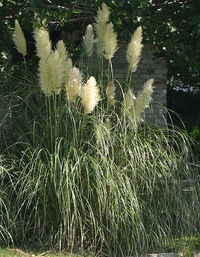CUSTODIANS OF THE LAMMA FOREST, SINCE 1997...

flora & fauna
Lamma Island, like the rest of Hong Kong suffered severe deforestation as a result of WWII and has since struggled to recover.
However in 1997, ABLE Charity began a programme of tree planting with the assistance of a diverse band of volunteers which have included: school groups, clubs, businesses, locals and visitors alike. With their help we have planted in the main over 2,000 trees that are indigenous to Lamma (see detailed list attached).
The area chosen was a rather barren hilly area, situated between the villages of Yung Shue Wan (YSW) and Pak Kok (PK), lying in the North West corner of Lamma Island which can be seen from the maps section.
The Agriculture, Fisheries and Conservation Department (AFCD) have also been responsible for a concerted tree planting regime on the Island over the last 14 years or so. They have planted mainly exotic species, which are quick growing, e.g. Brush box, Horsetail tree, Slash pine, Paper bark tree, Ear leafed, Taiwan Acacias and various eucalyptus species.
The results have been quite astonishing, as can be seen by the photographs taken in 1997, compared to latest photographs taken almost 15 years later.
Lamma Forest, as defined in the attached maps can be accessed from either of the two ferry piers, one situated at Pak Kok (ferry from Aberdeen) and the other at Yung Shue Wan (ferry from Central Pier 4). The forest is bounded to the West, by the South China Sea (West Lamma Channel) and to the East by the paved path which connects the villages of Pak Kok and Tai Ping that extends from sea level to a height of 97m. As the forest is bounded to the North and South by villages, the residents have planted a wide diversity of flora which adds to the number of trees, shrubs and herbs which one can encounter while visiting the area.
On the coastal path to the West linking YSW with PK, tree and herb species which have adapted to the saline conditions associated with their proximity to the sea can be found. These include Beach hibiscus or Cuban bast, Screw pine also known as the false pineapple, Elephant ear tree, Horsetail tree, White popinac, Leebek tree or mother’s tongue, Turn in the wind tree and Pond spice. On the sandy shores Beach vitex, Fan flower or half flower, Wedge leafed rattle pod and Jack bean, to name but a few can be found.
Special mention must go to the fig trees found in the forest, with the Banyan tree also known as the small leafed fig (ficus macrocarpa) being the most impressive. The village of YSW in Cantonese translates to Banyan Bay, easily identified by their many aerial roots hanging down from the branches. Other figs encountered include, the rubber tree (ficus elastics), opposite leafed fig (ficus hispida), large leafed fig (ficus virens var. sublancelota), Benjamin fig or weeping fig (ficus benjamina), common red stemmed fig and strangler figs.
Bauhinia species include the Hong Kong Orchid tree (Bauhinia blakeii), the flower of which was adopted by Hong Kong as its national flower and a representation appears on the Hong Kong flag. It flowers from late November through to late spring and is a splendid sight to behold. As the Hong Kong orchid tree is sterile it bears no seeds, therefore if one sees pods hanging from the branches, then it is one of the other species of Bauhinia found in the forest these include the Camel’s foot, purple bauhinia or Bauhinia variegata.
Various hiking paths have been formed to provide access to the forest, these can be found on the attached maps. Various points of interest are also marked on the map, these include: the picnic site, ghost stone, lone palm, wedding grove and Mad Hatters, etc. Rain shelters (three in number) are also marked with an umbrella sign, if caught in a downpour you can head for one of these.
Many of the island industries have all but vanished over the years such as the Tannery, which was situated by Tannery beach and various piggeries like the ruin by the lone palm. For fruit orchards, some still remain by Pak Kok village, especially Litchi orchards. Market gardens and rice paddies were located in the valleys. Being an island, fishing and drying of fish is still carried on in some parts. After a visit to the Forest why not visit one of the many seafood restaurants located in Yung Shue Wan before returning to Hong Kong Island.
Giant upright Elephant Ear plants can be found in the shade below the forest canopy, along with species of Lilies, Hibiscus, Rhododendrons, Chloredendrons, Chinese privet etc.
As the Japanese kept a large variety of snakes for experimental purposes on the island during WWII, on leaving they released these into the wild. Most snakes will avoid human contact and retire when they hear one approach. Though just be aware when hiking the forest.
This is by no means a definitive dissertation, but merely to highlight the extreme diversity of flora and fauna which can be found in and around Lamma Forest. We hope this has stimulated your interest to explore the natural environment found here further on this unique island only 25 minutes by ferry from Hong Kong.

























